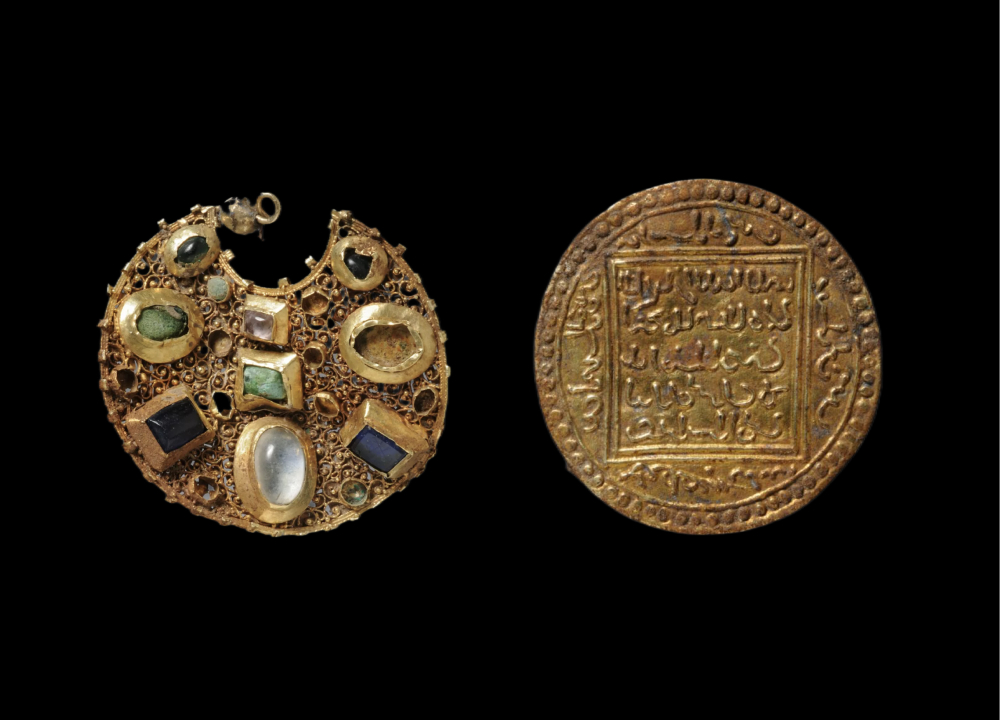
A trainee metal detectorist in northern Germany has unearthed an 800-year-old hoard of gold jewellery and silver coins suggesting the area’s trading history. Dr Ulf Ickerodt, director of the State Archaeological Department of Schleswig-Holstein says the hoard found contained “two very high-quality gold earrings set with semi-precious stones, a gilded pseudo-coin brooch, two gilded stone-studded finger rings, a ring fragment, a small formerly gilded perforated disc, a ring brooch, and about 30 silver coins, some of them heavily fragmented.”
Archaeologists have been investigating the Schleswig-Holstein region for decades including the world heritage site, Haithabu, known as Hedeby in Danish. Hedeby was the second largest Nordic town and was used by Vikings between the eighth and eleventh centuries. The region was destroyed and abandoned around 1066 resulting in many valuables being left behind.
The most interesting pieces of the bunch prove to be the gold earrings and the imitation Islamic coin-turned-brooch. Dr Ickerodt suggests the earrings to be in the tradition of Byzantine goldsmiths, approximately dated around and after the year 1100. The presence of the Islamic fashioned brooch is noted to be from Almohad Caliphate, which was an Islamic dynasty that ruled southern Spain and northern Africa between the 12th and 13th centuries. “An extensive north-south and east-west trade network has developed here since the early Middle Ages, in which the Mediterranean region, the North Sea, and the Baltic Sea were integrated,” Dr Ickerodt says. “The hoard was certainly not put down by chance.”
Further reading: